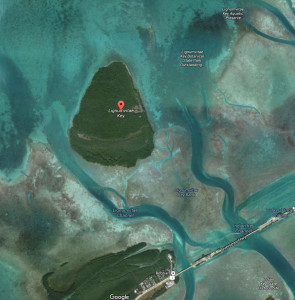
Lignumvitae Key Botanical State Park manages 10,000 acres of submerged land surrounding the islands of Indian Key, Shell Key and Lignumvitae Key. Of this, approximately 8,400 acres are seagrass habitat. The three main species of seagrass are turtle grass, shoal grass and manatee grass. In areas where seagrass are less dense, various types of algae are present including shaving brush, fern and oatmeal algae. Small colonies of coral, including finger coral, rose coral, and golfball coral, can also be found in the seagrass bed. Channel markers and no motor zone signs are used within Lignumvitae Park waters. Despite these aids to navigation, seagrass beds are still impacted by boat groundings, resulting in damage to the habitat. The most destructive and hardest to restore are blowholes, created when boat engines are used in an effort to free the vessel. Seagrass roots are not able to grow when the depth of a blowhole exceeds 6 inches; therefore, restoration is necessary in order to prevent further damage.
Staff at Lignumvitae Key Botanical State Park have been conducting seagrass restoration since 2005, restoring 44 sites at a cost of more than $1 million. The highest priority is to use fill material when the damage needs to be restored to the level of the surrounding seagrass bed. Another common restoration tool is to install bird stakes in the damaged area for a short period of time. Birds roost on the stakes and their waste fertilizes the shoal grass. Once shoal grass is established, turtle grass has a better chance to expand into the site, adding to the overall restoration. The restoration goal is to reach 50 percent seagrass cover, which then leads to restoring the habitat to its former state prior to the grounding event. Most of the restoration in the park is accomplished by contractors. However, park staff also conduct in-house restoration. In addition, staff from several Keys state parks have assisted with restoration projects. The most recent project involved removing bird stakes from three sites, and then installing 192 bird stakes at six restoration sites. Seagrass restoration is costly and cannot fully compensate for the loss of resources, but it is an important part of replacing lost habitat.
For more information about Florida State Parks visit FloridaStateParks.org. Janice Duquesnel is a biologist with the Florida Park Service.
